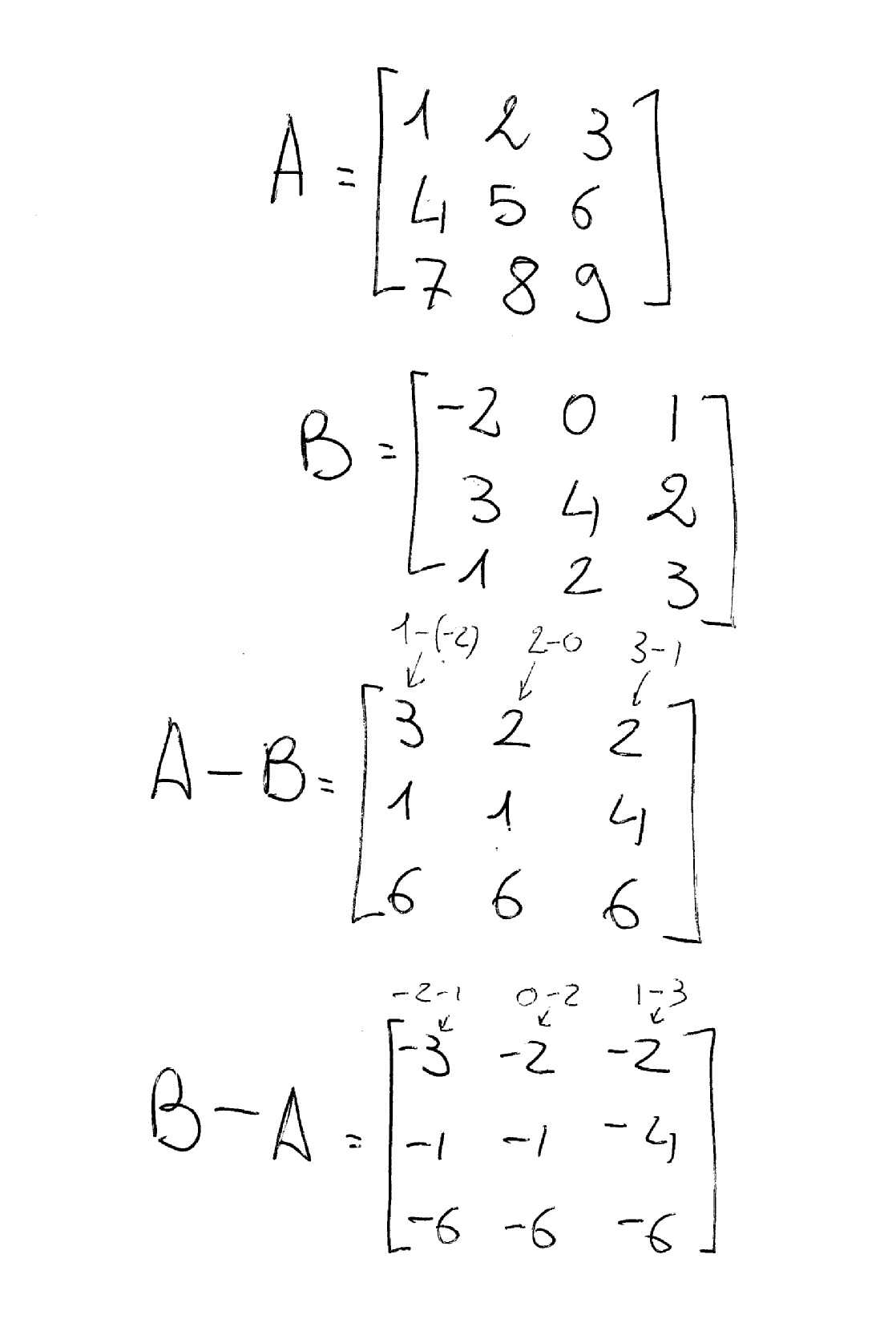Subtraction of Matrices
Key Questions
-
Matrix subtraction is not commutative because you have to subtract term by term your two matrices and the order in the subtraction counts. So:
#A-B!=B-A# For example, consider:

-
Answer:
Addition and subtraction of matrices is easier than multiplication. So now many mistakes are there in the subtraction.
Explanation:
However still there are silly mistakes which a student can make.
For example a negative number in the second matrix must be solved carefully as it needs to be added and not subtracted. -
Matrix dimensions must be the same to complete matrix subtraction. That means both matrices have to have the same number of rows and columns. To subtract matrices, you subtract each term in the same position. (For example the term in the 3rd row, 1st column of one matrix would be subtracted by the 3rd row, 1st column of the other matrix. Refer to the example below:
Note: _ is used to keep spaces in matrix
Matrix 1:
[3_2_6]
[7_4_5]
[2_1_8]Matrix 2:
[8_6_5]
[4_2_1]
[3_2_7]Matrix 1 - Matrix 2:
[(3-8) (2-6) (6-5)]
[(7-4) (4-2) (5-1)]
[(2-3) (1-2) (8-7)]Answer
[-5_-4_1]
[32_4]
[-1_-11] -
You subtract the corresponding elements to get your result.
This is one of the easier matrix operations. Here is an example:
[a b c]-[g h i] = [a-g, b-h, c-i]
[d e f]. [j k l] ... [d-j,. e-k,. f-l]Ignore the "."; it's the only way to space things right now.
Since we are subtracting corresponding elements, the matrices must have the same dimensions; the answer must also have the same dimension.